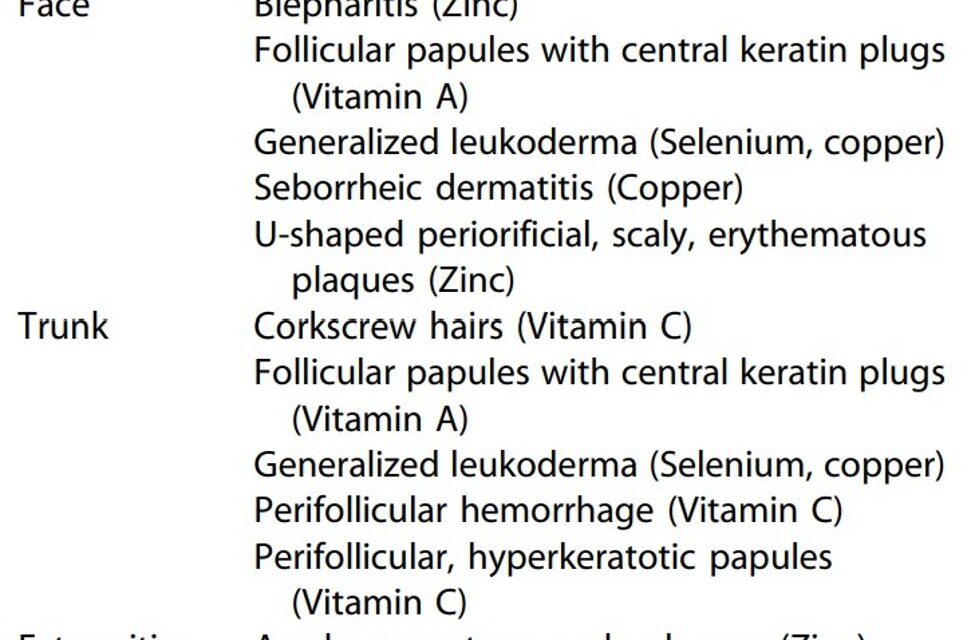The epidemiology, impact, and diagnosis of micronutrient nutritional dermatoses part 1: Zinc, selenium, copper, vitamin A, and vitamin C
Dermatologists play a critical role in diagnosing and managing nutritional deficiencies as they often present with cutaneous findings. Traditionally, nutritional dermatoses are taught in the context of developing countries, famine, population displacement, and poor health care access; however, in the United States, common risk factors include chronic liver disease, alcoholism, psychiatric disease, bariatric surgery, inflammatory bowel disease, and hemodialysis. Additionally, nutritional dermatoses may be underdiagnosed in the United States and result in increased morbidity and utilization of hospital resources. There is a need for providers in developed nations to identify these deficiencies, and this review aims to meet that practice gap and provide relevant context to these diseases for dermatologists. This 2-part review series will focus on the epidemiology, impact, appearance, and diagnostic modalities for micronutrient deficiencies, including zinc, selenium, copper, and vitamins A and C in part 1. The companion review will focus on the B-complex vitamins.
Explore this CME to discover more: bit.ly/3LB3xAI












